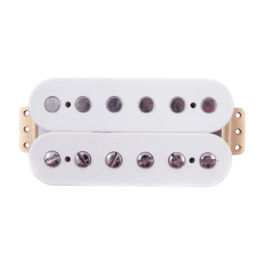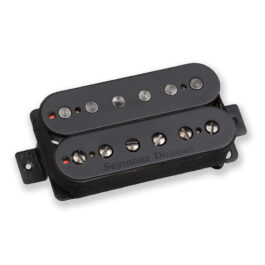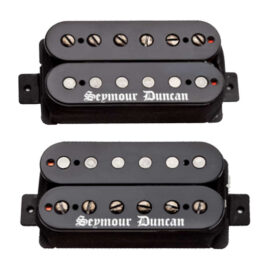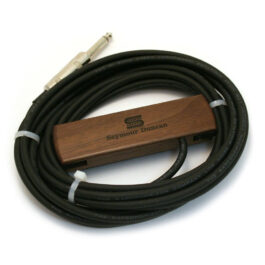
When it comes to the tone of your electric guitar or bass, the pickups you use can have a significant impact. That is why it is imperative that you use the right pickups for the job. Today we’re going to explore the difference between the two most common pickup types; single coils and humbuckers.
Before we dive into it, it is important to note that we’re going to be talking about the general characteristics of these types of pickups, but there is no hard and fast rule dictating which pickups should be used for which genre. There is a common practice that emerges, but it’s all down to personal taste and experimentation.
Single Coil Pickups

Single Coil pickups were the first electric guitar pickups to come to the market. They can be described as bright and, in some cases, twangy (think the unmistakable twang of a country player riffing on a Fender Telecaster.) Single coil pickups consist of either a single central magnet or separate magnets beneath each string. They tend to be narrow, but are loved for their higher frequency response (when compared to humbuckers).
If you listen to old-school country and rock music, the tone of the single coil pickup is unmistakable. It is the sound of Jimi Hendrix, Eric Clapton, Stevie Ray Vaughn, and all the other Fender players you know and love.
The problem with single coil pickups, however, is that they tend to also pick up on electromagnetic interference known as the 50/60hz buzz. So if you’re power supply isn’t perfectly stable, or if you’re playing on a stage with un-grounded lights, there is a distinctive hum that the pickups produce.
Some purists claim that this hum is what makes a single coil pickup special. Other players, however, loath that hum with a passion.
The Sound of Single Coils
Humbuckers
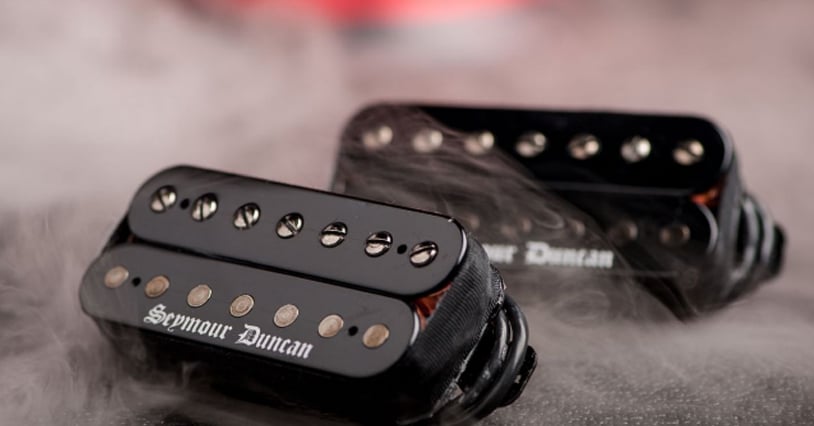
At first, championed by Gibson, then adopted by every major guitar manufacturer since then, the humbucker was designed to kill that hum. So how was this achieved?
It wasn’t long before people figured out that if you wire two single coils together, and ensure that they are out-of-phase with each other, that you can eliminate the hum associated with single-coil pickups.
Most guitarists would say that humbuckers typically have a fuller sound; one that we perceived as rounder and warmer. This is because they tend to emphasize the mid-range produced by your guitar, and consequently extend the sustain.
Humbuckers tend to be a popular tonal choice for jazz, modern rock, and metal players. With an emphasis in the mids and a better distortion clarity, they are also popular with blues players seeking overdriven tube sounds.
The Sound of Humbuckers
Now that you know the difference between single coil and humbucker pickups, let’s take a quick look at the difference between active and passive pickups
Passive vs Active Pickups
The differences between active and passive pickups are vast. Just about everything from construction to tone is different
The practical difference between the two is that passive pickups are in essence transducers, whereas active picks are electromagnets.
A passive pickup is made by wrapping copper wire around a magnet. This causes the string above pickup to magnetise. When the string moves, this disrupts the magnetic field which in turn creates an electronic signal in the copper wire.
Active pickups use copper coilings as well but require far less of them. Their circuitry is powered by a 9 volt battery and includes an active preamp. This preamp is needed to boost the signal and power the EQ.
The big advantage of an active pickup is that it eliminates noise. However, many players say that the noise created by pick-ups gives certain instruments a distinctive tone.
So ultimately, when selecting which to go for, listen to both and decided for yourself which is better.
Shop Pickups Online...
-
Birthday Sale Deal!
- Guitar & Bass, Guitar Accessories, Pickups
Fender Twin Head Vintage Humbucker Pickup – Bridge – White
-
R4,195R3,985FREE DELIVERY - Select options
-
- Out of Stock
- Guitar & Bass, Pickups
Seymour Duncan Pegasus Trembucker Electric Guitar Pickup – Bridge
-
R3,495R2,845FREE DELIVERY - Select options
-
-
Birthday Sale Deal!
- Guitar & Bass, Pickups
Seymour Duncan Pegasus Electric Guitar Pickup – Bridge
-
R3,395R2,845FREE DELIVERY - Select options
-
- Out of Stock
- Guitar & Bass, Pickups
Seymour Duncan Black Winter Set Pickups
-
R7,595R5,695FREE DELIVERY - Select options
-
-
- Out of Stock
- Guitar & Bass, Pickups
Seymour Duncan Woody SC Acoustic Guitar Pickup – Walnut
-
R2,895R2,170FREE DELIVERY - Select options
-


